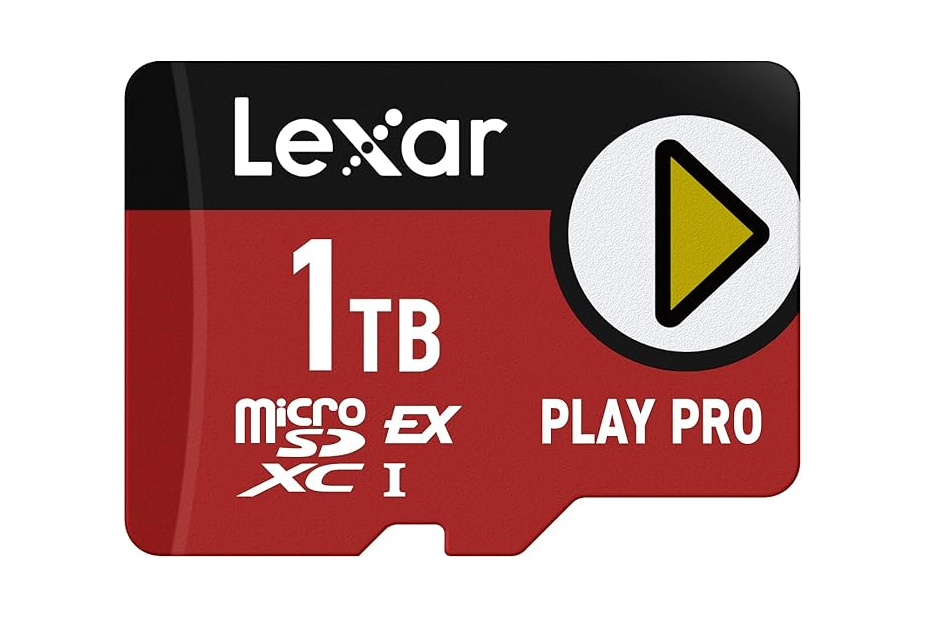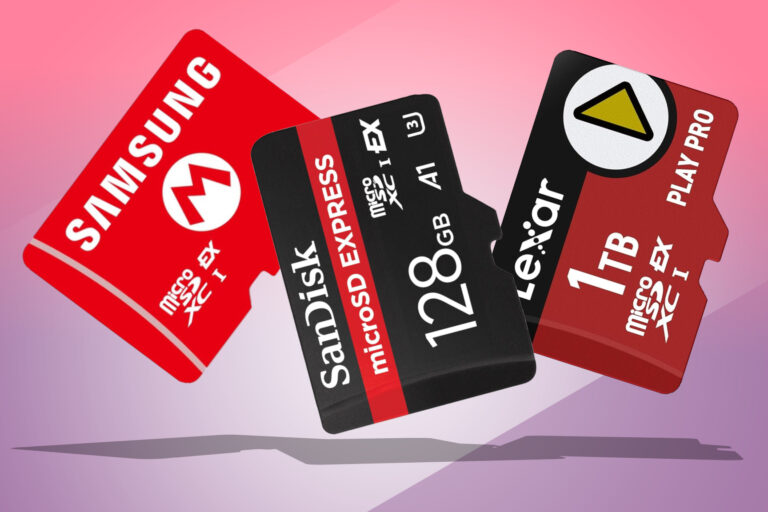The Nintendo Switch 2 is almost here, and with it comes a big shift in how you’ll store and play your games. While the original Switch (still one of the best consoles around) supported standard microSD cards, the Switch 2 requires microSD Express cards for game storage.
These new cards offer dramatically faster data transfer speeds – up to 4.4 times faster – thanks to their PCIe NVMe SSD classification.
You can identify these cards by a small “EX” emblem on both the card and the packaging. They are more expensive than their predecessors, with prices starting around $50 / £50 for 256GB and reaching up to $200 / £200 for 1TB.
It’s worth noting that while the Switch 2 supports cards up to 2TB, 256GB is currently the most widely available size. 1TB cards are hard to find in stock, and no one has a 2TB option at the time of writing.
The Switch 2 comes with 256GB of internal storage, so you might not need an upgrade immediately. However, if you plan to download multiple games or prefer digital copies, investing in a microSD Express card is a smart move.
In this guide, we’ll help you navigate the best microSD Express cards for your Nintendo Switch 2, considering factors like speed, capacity, and price.
Why you can trust Stuff: Our team of experts rigorously test each product and provide honest, unbiased reviews to help you make informed decisions. For more details, read how we test and rate products.
Quick list: What’s the best microSD Express Card?
The best microSD cards you can buy today:
1. Samsung microSD Express Card 256GB
| Samsung microSD Express Card specs | |
|---|---|
| Capacity | 256GB |
| Speed | 800MB/s read |
| Price per GB | 20 cents / pence per GB |
The Samsung microSD Express Card is made specifically for the Nintendo Switch 2, complete with an official Mario “M” logo on the front. It’s a 256GB card, which doubles the console’s internal storage and gives you plenty of room for digital games.
Built on microSD Express tech, it delivers the fast load times the Switch 2 is designed for. It’s also officially licensed, so you know it’ll work as intended.
At $49.99 / £49.95, it offers the best balance of speed, capacity and value, making it our top pick overall. It looks the part and performs brilliantly. What more do you need?

2. SanDisk microSD Express Card 128GB
| SanDisk microSD Express Card specs | |
|---|---|
| Capacity | 128GB |
| Speed | 880 MB/s read 480 MB/s write |
| Price per GB | 31 cents / pence per GB |
The 128GB SanDisk microSD Express card is the cheapest way to get into next-gen storage for the Nintendo Switch 2, but it’s not the best value. At around $40, it works out pricier per gigabyte than the 256GB options, and you’ll fill it up quickly if you download a lot of games.
That said, it still delivers all the speed benefits of microSD Express, including fast load times and smoother gameplay. It’s also backwards compatible with older UHS-I devices. Ideal if you’re on a tight budget, but if you can stretch a bit further, the larger cards offer better long-term value.

3. Lexar Play PRO microSD Express Card 1TB
| Lexar Play PRO microSD Express Card specs | |
|---|---|
| Capacity | 1TB |
| Speed | 900MB/s read 600MB/s write |
| Price per GB | TBD |
The Lexar 1TB Play PRO microSD Express Card is the biggest capacity microSD Express card you can currently buy, making it perfect for serious gamers with huge digital libraries. It’s fully compatible with the Nintendo Switch 2, Steam Deck, ROG Ally and other portable gaming systems.
With read speeds up to 900MB/s and write speeds up to 600MB/s, it’s about four times faster than standard UHS-I cards. That means faster game loads, quicker downloads, and smoother performance. It’s also backwards compatible with older devices and comes with a limited lifetime warranty and Lexar’s recovery tool.
How fast is microSD Express?
microSD Express cards offer speeds of up to 985 MB/s, thanks to their use of PCIe Gen 3 and NVMe interfaces – the same tech found in modern SSDs. That’s nearly ten times faster than the 104 MB/s limit of standard UHS-I microSD cards.
This jump in speed makes a big difference for tasks like loading large games or transferring data. While most current games don’t fully need that speed yet, the Nintendo Switch 2 is built to take advantage of it, especially as future titles grow in size and complexity.
How long will a MicroSD Express card last?
A microSD Express card should last several years with normal use. Like all flash storage, its lifespan depends on how often you write and erase data. Most cards are rated for thousands of write cycles and come with wear-levelling tech to spread the load.
For gaming, where you mostly read data rather than constantly rewriting it, that’s good news. You’re more likely to outgrow the storage space before the card wears out.
Some brands also offer warranties – often five years or more – as a sign of durability.
What’s the difference between microSD Express cards and regular microSD cards?
microSD Express cards are the same size and shape as regular microSD cards, so they’ll physically fit in the same slots. The big difference is inside: microSD Express uses PCIe and NVMe tech, giving it speeds up to 985 MB/s – much faster than the 104 MB/s limit of standard UHS-I microSD cards.
They also have extra pins to handle that speed, though they remain backwards compatible with older devices (just slower).
One downside? They’re more expensive than regular microSD cards. But if you’ve got hardware like the Nintendo Switch 2 that supports them, the performance boost can be worth it.
How to tell if you have a microSD Express card
To tell if you have a microSD Express card, look for the “EX” logo on the card itself or the packaging. This is the official symbol that marks it as a microSD Express product. These cards will also usually mention PCIe or NVMe in the specs or product description.
Visually, they look identical in size and shape to standard microSD cards, but under a magnifying glass, you might notice extra pins on the back – used for the faster interface.
Liked this? I’m tracking the Nintendo Switch 2 pre-order deals – here’s how to get yours
Read the full article here
